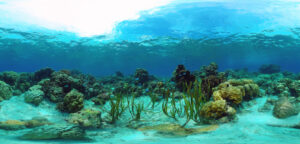
Teaching with 360-Degree Video
Three hundred sixty–degree (360°) video provides an opportunity for students to have an immersive experience of a location they’re studying in class. Prices have dropped to a point where institutions generally have 360° cameras available for instructors to use. Students can play 360° videos




